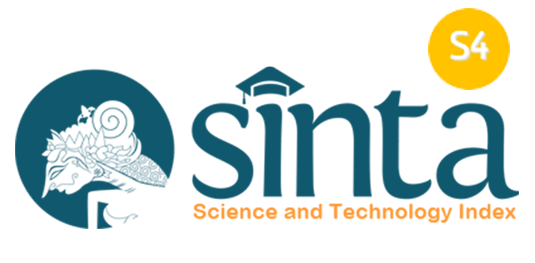Hubungan Tingkat Pengetahuan Tentang Anemia Dengan Kepatuhan Ibu Hamil Meminum Tablet Zat Besi Di Puskesmas Sengkol
DOI:
https://doi.org/10.37824/jkqh.v7i2.2019.124Keywords:
Anemia, Knowledge, Compliance taking iron tablets, Anemia, Knowledge, Compliance Taking Iron TabletsAbstract
The purpose of this study was to research pregnant woman research on anemia with pregnant women using substance tablets at the Sengkol Health Center, Central Lombok District. This research method is an observational study using a cross sectional study, using a questionnaire conducted in March-April 2019 as pregnant women with anemia, samples taken with simple random sampling from 30 respondents, data analysis using univariate analysis, bivariate analysis using chi square. The results of this study were obtained by respondents who had the highest knowledge from mothers who knew about anemia, 27 respondents (90%), and those who did not know about anemia were 3 respondents (10%). Respondents who used tablets using substances were 23 respondents (76.7%), and those who used iron were 7 respondents (23.3%). the results of the analysis using chi-square obtained a relationship associated with the level of knowledge of pregnant women in consuming p-value tablets <? (0.05). Where the value of p = 0.009 because the value of p < ? (0.05). The conclusion is the relationship between the level of knowledge of pregnant women about anemia with the contribution of pregnant substance tablets at the Sengkol Health Center.
References
[2] Ks Khan, Wojdyla D, Say L, Gu¨lmezoglu AM, Van Look PF. WHO analysis of causes of maternal death: a systematic review. The Lancet. 2006; 367(9516):1066–74.
[3] Karaoglu L, Pehlivan E, Egri M, Deprem C, Gunes G, Genc MF, et al. The prevalence of nutritional anemia in pregnancy in an East Anatolian Province, Turkey. BMC Public Health. 2010; 10(1):1.
[4] Kefiyalew F, Zemene E, Asres Y, Gedefaw L. Anemia among pregnant women in southeast ethiopia: prevalence, severity and associated risk factors. BMC Research Notes. 2014; 7(1):1.
[5] Bothwell TH. Iron requirements in pregnancy and strategies to meet them. Am J Clin Nutr. 2000;72:257S–64S.
[6] Cantor AG, Bougatsos C, Dana T, Blazina I, McDonagh M. Routine iron supplementation and screening for iron deficiency anemia in pregnancy: a systematic review for the U.S. Preventive Services Task Force. Ann Intern Med. 2015;162:566–76.
[7] Milman N. Iron and pregnancy–a delicate balance. Ann Hematol. 2006;85:559–65.
[8] Pena-Rosas JP, Viteri FE. Effect and safety of preventive oral iron+folic acid supplementation for women during pregnancy. Cochrane Library; 2009.
[9] Guidelines for control of Iron Deficiency Anaemia: National Iron plus Initiative; 2013. 8.
[10] [RISKESDAS] Riset Kesehatan Dasar. (2017). Jakarta: Badan Penelitian dan Pengembangan Kesehatan Kementrian Kesehatan RI.
[11] RISKESDAS] Riset Kesehatan Dasar. (2013). Jakarta: Badan Penelitian dan Pengembangan Kesehatan Kementrian Kesehatan RI.
[12] RISKESDAS] Riset Kesehatan Dasar. (2018). Jakarta: Badan Penelitian dan Pengembangan Kesehatan Kementrian Kesehatan RI.
[13] Dikes Kabupaten Lombok Tengah. Pemantauan Wilayah Setempat Kesehatan Ibu dan Anak Tahun 2017. Dinas Kesehatan Kabupaten Lombok Tengah, 2017.
[14] Erwin, R. R., Machmud, R. & Utama, B. I. Artikel Penelitian Hubungan Pengetahuan dan Sikap Ibu Hamil dengan Kepatuhan dalam Mengkonsumsi Tablet Besi di Wilayah Kerja Puskesmas Seberang Padang Tahun 2013. J. Kesehat. Andalas 6, 596– 601 (2017)
[15] Galloway R, McGuire J. Determinants of compliance with iron supplementation: Supplies, side effects, or psychology? Social Science & Medicine 1994; 39:381-90.
[16] Zakia m. Ibrahim, seham abd el-hamid, Hend Mikhail, and Maged S. Khattab, 2011, Assessment of Adherence to Iron and Folic Acid Supplementation and Prevalence of Anemia in Pregnant Women, Med. J. Cairo Univ., Vol. 79, No. 2, June 115-121, 2011
[17] RISKESDAS] Riset Kesehatan Dasar. (2016). Jakarta: Badan Penelitian dan Pengembangan Kesehatan Kementrian Kesehatan RI.
[18] Galloway R, McGuire J. Determinants of compliance with iron supplementation: Supplies, side effects, or psychology? Social Science & Medicine 1994; 39:381-90.
[19] Allen LH. Anaemia and iron deficiency. effects on pregnancy outcome. Am J Clin Nutr 2000;71(suppl):1288S–94S. 6. Scholl OT, Johnson WG. Folic acid. influence on the outcome of pregnancy. Am J Clin Nutr 2000; 71(suppl):1295S–303S
[20] Iron deficiency anaemia assessment, prevention and control. Available from URL http:// www. w h o .int/vmnis/indica tor s / haemoglobin.pdf (Accessed on 10-09-2012).
[21] Dinas Kesehatan Nusa Tenggara Barat (2013), Profil Kesehatan Nusa Tenggara Barat: Mataram: Dinas Kesehatan Nusa Tenggara Barat.
[22] Nursalam. 2013. Metodologi Penelitian Ilmu Keperawatan: Pendekatan Praktis : Jakarta : Salemba
[23] Dahlan, Sopiyudin M. 2013. Besar Sampel dan Cara Pengambilan Sampel. Jakarta: Salemba Medika
[24] Notoadmojo, (2014), Ilmu Perilaku Kesehatan, Edisi pertama, Rineka Cipta, Jakarta, Indonesia
[25] Maskey M, Jha N, Poudel SI, Yadav D. Anemia in pregnancy and its associated factors: A study from Eastern Nepal. Nepal Journal of Epidemiology. 2014;4(4):386-92.
[26] Abdelnefez AM, EI-Soadaa SS. Prevalence and risk factors of anemia among a sample of pregnant females attending primary health care .Pak J Nutr. 2012;11:1113-20.
[27] Dorairajan G, Palanivel C, Sakthi D. Influence of awareness and attitude about anemia and iron
[28] Nivedita K, Shanthini FN. Knowledge, attitude and practices of pregnant women regarding anemia, iron rich diet and iron supplements and its impact on their hemoglobin levels. Int J Reprod Contracept Obstet Gynecol. 2016;5:425-31
[29] World Health Organization (WHO). 2012. Guideline: Daily iron and folic acid supplementation in pregnant women. Geneva, World Health Organization.
[30] Gebre, A. 2015. Assessment of Factors Associated with Adherence to Iron-Folic Acid Supplementation Among Urban and Rural Pregnant Women in North Western Zone of Tigray, Ethiopia: Comparative Study, International Journal of Nutrition and Food Sciences. 4 (2)
[31] Saxena, R. 2014. Bedside obstetrics & gynecology. 2nded. New Delhi, India: Jaypee Brothers Medical Publishers. p 585.
[32] Stoltzfus, R.J. & Dreyfuss, M.L. 2012. Guidelines for the use of iron supplements to prevent and treat iron deficiency. Washington, United States: ILSI Press. Pp. 4-18
[33] Goodman, L.S. & Gilman, A. (1970). The pharmacological basis of therapeutics. 4th ed. New York: Macmillan Co.
[34] Galloway, R. & McGuire, J. 1994. Determinants of compliance with iron supplementation: Supplies side effects, or psychology? Social Science & Medicine 39: 381-390.
[35] Subarda, Hakimi.M, Helmyat.S (2011) Pelayanan antenatal care dalam pengelolaan anemia berhubungan dengan kepatuhan ibu hamil minum tablet besi. Jurnal Gizi Klinik Indonesia. 8(1), 7-13
[36] Notoatmodjo, Soekidjo, 2007, Promosi Kesehatan dan Ilmu Perilaku, Rineka Cipta, Jakarta, hal. 133, 139, 140-143.







